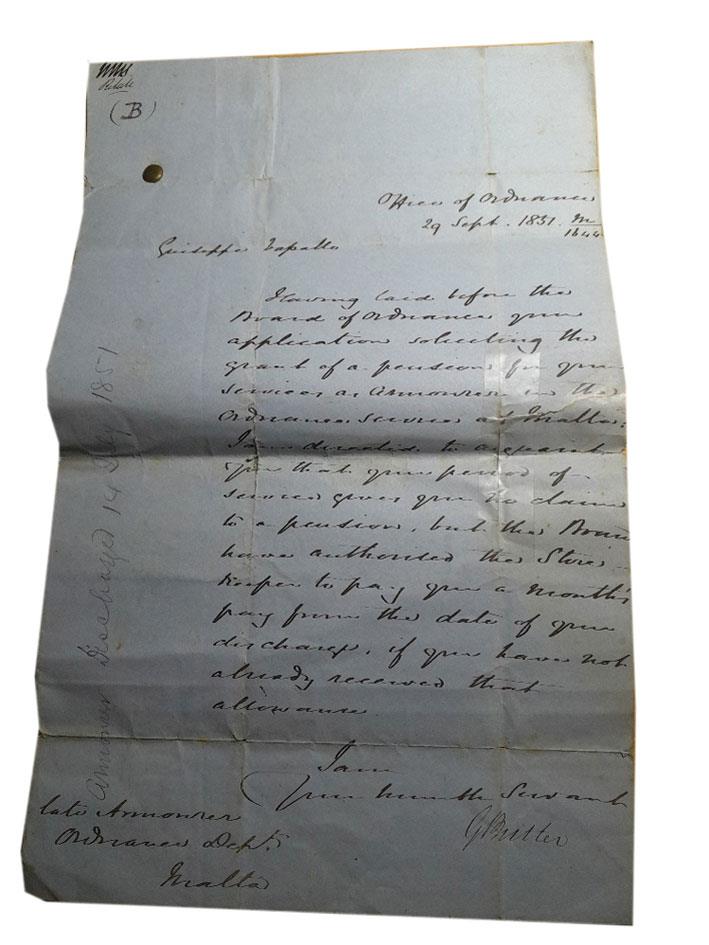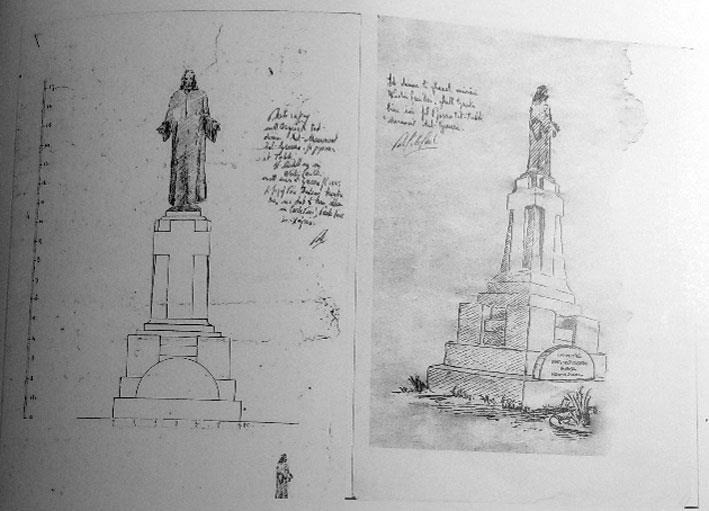An 1896 photo of Armourers (soldiers and sailors) of the cruiser 'HMS Blake' at work on a six-in quick-firing 100-pounder guns during the home annual picnic in Malta. Source: 'Army and Navy Illustrated', July 1896
A Maltese armourer
The Army and Navy Illustrated of July 1896 gives an interesting overview of the work done by armourers on board ships with reference to the cruiser HMS Blake during the armourers' work on a six-in quick-firing, 100-pounder guns when the cruiser visited Malta for its home annual picnic.
"The duties of the armourers on board ships, as the French say, express themselves. They have to do with everything connected with keeping in efficient working order the arms small and great, of every kind. The armourers are classed under the general designation of 'artificers' and, with the torpedo artificers, belong to the gunner's staff, as the department in charge of that warrant officer. They examine and lubricate all guns, fittings and mechanism Monday morning as a matter of routine, and at all other times that may be necessary; execute all repairs within their scope and with members of the carpenter's crew, see to the testing once a week and repairing of the fire engines and fire extinguisher on board and the hoses. They are generally excused the inspection of arms, divisional drills and quarters for cleaning guns and arms."

Letter from Office of Ordinance to Armourer
The British arsenal in Malta employed Maltese armourers with the Office of Ordnance and one such armourer was Giuseppe Vassallo. On 29 September 1851, Giuseppe received a discharge letter from the Ordnance Department signed by G. Butler, where he was informed that after an application by Giuseppe for the granting of a pension for his services as armourer in the Ordnance Service at Malta, his period of service gave him no claim to a pension, but that the Board authorised the Stores Keeper to pay him a month's pay from the date of his discharge (14 July 1851), if he had not yet received that allowance.
Attached to this letter were two recommendation notes signed by the Master Armourer, G. R. Palmer. In the first letter dated 26 November 1851, it was certified that Joseph Vassallo had been many years employed as an armourer in H.M. Ordnance at Malta and had been discharged owing to a reduction in the said department. He was also certified as fully competent to perform the duty of an armourer in the H.M. Navy. The second letter, dated 9 December 1851, certified that Joseph Vassallo had been employed under G. R. Palmer for several years during which time he had conducted himself well, being honest, sober, regular and attentive.
The Board of Ordnance was a British government body set up in the late 15th century. It was disbanded in 1855, tarnished by poor performance in supplying the Army in Crimea.
The Board was responsible for supplying the Army and Navy with weapons and ammunition. Other items were provided by various other boards and agencies.
The Return of Military Expenditure, incurred by the Colony of Malta on account of its military defence from 1 January up to 31 December 1854, lists several military posts under the control of the Ordinance Department in Malta and Gozo.


Malta
- The whole of the fortifications enclosing Valletta, Fort St Elmo, St John Cavalier, St James Cavalier including several barracks, military quarters, hospitals, guard rooms, Ordnance and Commissariat establishments throughout the Fortress
- Floriana, the whole of the fortifications and outworks including the suburb of Hamrun with the Horn works and Crown works in advance of the Land Force
- Fort Ricasoli
- Fort St Angelo
- The Fortified Lines enclosing the City of Vittoriosa
- The Fortified Lines enclosing the City of Senglea
- The Margarita Lines and new works in course of construction including the city of Burmola
- The Cottonera Lines
- Fort Tigne'
- Fort Manoel
- The Signal Stations at Asciack and Ghargur
- The Signal Station on the roof of the Selmun Palace
- The Towers and Redoubts in the Bay of Marsascirocco

Two preliminary designs of the war monument - Monument of Christ the King by sculptor Wistin Camilleri
Gozo
- Fort Chambray
- Castle Rabato
- The Signal Stations at Nadur and Dbiegi
Gozo wartime posters
Our sister island, Gozo, was not the main target of the barbarous Axis attacks but still suffered its share of death and destruction. These two rare Second World war posters, made available with the kind permission and courtesy of the Gozitan poet and historian, Charles Bezzina, offer an insight into the type and intensity of attacks Gozo suffered. Poster No. 1 contains a numbered list of machine-gun attacks on Gozo and poster No. 2 the bombs dropped over Gozo.
Gozo war memorial
In the middle of Independence Square (also known as It-Tokk) in Rabat Gozo, stands the most dominant feature of the square (among other historical edifices) - The Christ the King War Monument. Every year on 11 November, a solemn remembrance ceremony is held in memory of those Gozitans who lost their lives during both world wars.
This monument was inaugurated on 7 May 1954 by the late Queen Elizabeth II. Since the monument's inauguration, the committee in charge of its construction has worked diligently to gather the names of the war victims. In 1967, 124 names were placed on the monument. Other names were discovered later. This was the result of long years of research by Frank Bezzina (1925-1996), who together with his son Charles Bezzina (referred to earlier), researched the war. After many years of persistence and through contacts with other Maltese researchers and the Commonwealth War Graves Commission, managed to obtain the information, that was being sought.
Persons who want details of Second World War Gozitan victims, may consult the book, authored by Frank and Charles Bezzina, Il-Qilla tal-Gwerra fuq Għawdex 1940-43 published three times (2000/2020/2021) and Il-Vittmi Għawdxin tat-Tieni Gwerra published in 2006.
Unfortunately, this research has not been conducted concerning the Maltese victims of war, who number over 1,500 during both world wars. It is high time a team or committee, like they did in Gozo, is set up for the purpose of collecting victims' details and honour them as they truly deserve.